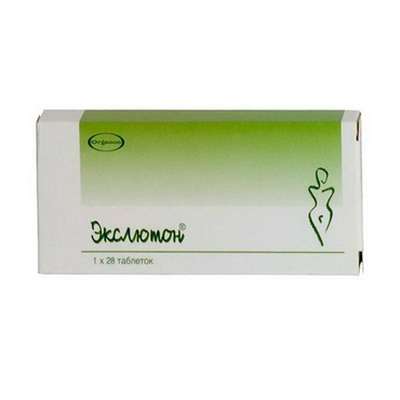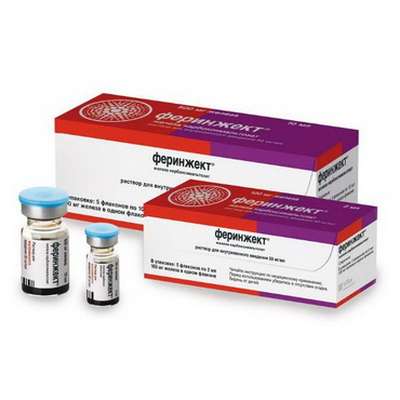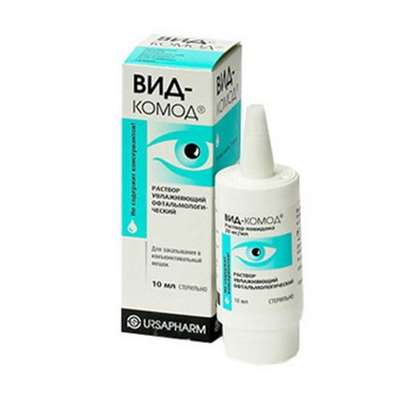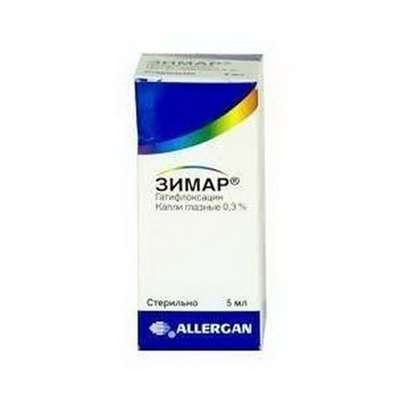Instruction for use: Secukinumab
I want this, give me price
Trade name of the drug – Cosentyx
The Latin name of the substance Secukinumab
Secukinumabum (genus. Secukinumabi)
Gross Formula
C6584H10134N1754O2042S44
Pharmacological group:
Immunosuppressive drugs
The nosological classification (ICD-10)
L40 Psoriasis: Chronic plaque psoriasis with diffuse; generalized psoriasis; Psoriasis of the scalp; hairy parts of the skin; A generalized form of psoriasis; Psoriazoformny dermatitis; Psoriasis complicated with erythroderma; disabling psoriasis; Isolated psoriatic plaque; Eksfolliativny psoriasis; psoriatic erythroderma; Psoriasis with eczematization; Hyperkeratosis in psoriasis; Inverse psoriasis; Psoriasis ekzemopodobnye; dermatoses psoriazoformny; Psoriasis genitals; Psoriasis lesions with hairy areas of the skin; erythrodermic psoriasis; Chronic psoriasis of the scalp; Chronic psoriasis; ordinary psoriasis; refractory psoriasis; Koebner phenomenon; psoriasis
L40.5 Arthropathy psoriasis (M07.0-M07.3 *, M09.0 *): Psoriatic arthritis; Arthropathic form of psoriasis
M07.3 Other psoriatic arthropathies (L40.5 +): Psoriatic arthritis; Generalized form of psoriatic arthritis; Psoriatic arthritis
M45 Ankylosing spondylitis: Ankylosing spondylarthrosis; Marie-Strumpel disease; Ankylosing spondylitis; Ankylosing spondylitis; Pain syndrome in acute inflammatory diseases of the musculoskeletal system; Pain syndrome in chronic inflammatory diseases of the musculoskeletal system; Bechterew's disease; Ankylosing spondylitis; Diseases of the spinal column; Rheumatic spondylitis; Bechterew-Marie-Strumpel disease
CAS code
875356-43-7
Characteristics of the substance Secukinumab
Fully human antibody (IgG1).
Pharmacology
Mode action - Anti-inflammatory, immunosuppressive.
Pharmacodynamics
Mechanism of action. Secukinumab selectively binds and neutralizes the pro-inflammatory cytokine-IL-17A. It has a direct effect on IL-17 and inhibition of its interaction with the IL-17 receptor, which is expressed by different types of cells, including keratinocytes and synoviocytes. As a result, sekikinumab inhibits the release of pro-inflammatory cytokines, chemokines and mediators of tissue damage and reduces the contribution of IL-17A to autoimmune and inflammatory diseases. In clinically significant concentrations, secuquinumab reaches the skin and reduces the concentration of local inflammatory markers. A direct consequence of the treatment with sekikinumab is the reduction in the redness, densification and flaking that are the result of psoriatic lesions.
IL-17A is a natural cytokine that participates in normally occurring inflammatory and immune responses. IL-17A plays a key role in the pathogenesis of plaque psoriasis, psoriatic arthritis and ankylosing spondylitis. An increase in the concentration of IL-17A produced by lymphocytes and congenital immune cells was found in the blood and affected areas of the skin in patients with plaque psoriasis, psoriatic arthritis and ankylosing spondylitis. The production of IL-17A is high in the affected skin compared to intact skin in patients with plaque psoriasis. In synovial fluid, in patients with psoriatic arthritis and in the subchondral bone marrow of the facet joints, a high concentration of cells producing IL-17A is found in patients with ankylosing spondylitis.
IL-17A also contributes to the development of tissue inflammation, neutrophil infiltration, destruction of bones and tissues, as well as tissue remodeling, including angiogenesis and fibrosis.
The concentration of total IL-17A (free and associated with sec-neumab IL-17A) is increased due to a decrease in the clearance of sec-neuron-associated IL-17A for 2-7 days in patients receiving secotinumab, indicating that sekichinumab selectively captures free IL-17A, It plays a key role in the pathogenesis of plaque psoriasis.
In a study with secuquinumab, infiltration of epidermal neutrophils and various neutrophil-binding markers that were elevated in damaged skin in patients with plaque psoriasis were significantly reduced after 1-2 weeks of treatment.
Against the background of secotinumab therapy, patients with psoriatic arthritis and ankylosing spondylitis had a decrease in concentration of C-reactive protein, which is a marker of inflammation, within 1-2 weeks.
Pharmacokinetics
Suction. After a single sc administration at a dose of 150 or 300 mg with plaque psoriasis, Cmax of secinucinumab in serum was 13.7 ± 4.8 or 27.3 ± 9.5 μg / ml, respectively, between 5 m And the 6th day after administration.
After the initial weekly introduction during the first month, Tmax was between the 31st and 34th day.
Cmax in the equilibrium state after sc administration of 150 or 300 mg was 27.6 and 55.2 μg / ml, respectively. The equilibrium state is achieved after 20 weeks with a monthly mode of administration.
Compared with exposure after a single dose, there was a two-fold increase in Cmax and AUC after repeated monthly administration during maintenance therapy. Sekokinumab is absorbed with an average absolute bioavailability of 73%.
Distribution. The mean Vd in the terminal phase (Vz) after a single IV injection varied between 7.1 and 8.6 L in patients with plaque psoriasis, it is likely that sekikinumab is limitedly distributed at the periphery.
The concentration of secotinumab in the intercellular fluid of the skin in patients with plaque psoriasis ranged from 28 to 39% of that in the serum for the 1-2 nd week after a single sc administration at a dose of 300 mg.
Excretion. The average systemic clearance in patients with plaque psoriasis was 0.19 l / day. The clearance was dose-and time-dependent, as predicted for the therapeutic IgG1 monoclonal antibody interacting with a soluble cytokine target, such as IL-17A.
The mean T1 / 2 in patients with plaque psoriasis was 27 days. T1 / 2 in individual patients with psoriasis ranged from 17 to 41 days.
Linearity / nonlinearity. The pharmacokinetic parameters for single and multiple injection of secinucinum in patients with plaque psoriasis were determined in separate studies with IV doses varying from 0.3 mg / kg single-dose to 10 mg / kg three times and with dosing of doses varying From 25 mg once to 300 mg repeatedly. In all dosing regimens, the exposure was proportional to the dose.
The pharmacokinetic parameters of sekinumab in patients with psoriatic arthritis, ankylosing arthritis and plaque psoriasis are the same.
Special patient groups
Elderly (over 65 years of age). Based on a population analysis of pharmacokinetic parameters, the clearance in patients over 65 years and younger patients was similar.
Impaired liver or kidney function. Available data on pharmacokinetics in patients with impaired hepatic or renal function are absent.
Application of the substance Secukinumab
Psoriasis of moderate to severe severity in adult patients who are shown systemic therapy or phototherapy; Active psoriatic arthritis in monotherapy or in combination with methotrexate in adult patients with insufficient response to prior therapy with basic drugs; Active ankylosing spondylitis in adult patients with insufficient response to standard therapy.
Contraindications
Severe hypersensitivity reactions to secaquinumab; Clinically significant infections in the stage of exacerbation (eg active tuberculosis); pregnancy; lactation; Age under 18 years (due to lack of data on efficiency and safety).
Restrictions
Chronic infections or anamnestic indications to them due to an increased risk of infection; Active stage of Crohn's disease.
Patients receiving secuinumab can be vaccinated with inactivated vaccines, administration of live vaccines should not be carried out.
Pregnancy and breast-feeding
Studies in laboratory animals showed no direct or indirect adverse effects on pregnancy, embryonic / fetal development, childbirth, or postnatal development. Since there are no adequate data on the use of secotinumab in pregnant women, its use in this category of patients is not recommended.
It is not known whether seksinumab penetrates human breast milk. Because Ig is excreted in human breast milk, it is not recommended to use secinquinum during breastfeeding.
There is no data on the effect of secaquinumab on the fertility of men and women. In studies in animals, a decrease in fertility was noted.
Side effects of Secukinumab
The most common adverse events associated with the use of secaquinumab were upper respiratory tract infections (most often nasopharyngitis, rhinitis). Most of them were mild or moderate.
Adverse events are listed below in accordance with the system-organ classification MedDRA. Within each system-organ class, undesirable phenomena are distributed according to the frequency of occurrence in order of decreasing importance. The following criteria were used to estimate the frequency: very often (≥1 / 10); Often (≥1 / 100, <1/10); Infrequently (≥1 / 1000, <1/100); Rarely (≥1 / 10000, <1/1000); Very rarely (<1/10000), including individual messages.
Infectious and parasitic diseases: very often - nasopharyngitis, upper respiratory tract infection; Often - rhinitis, pharyngitis, herpetic infection of the oral mucosa; Infrequently - sinusitis, tonsillitis, candidal infection of the oral cavity, fungal skin damage, inflammation of the external ear.
From the blood and lymphatic system: infrequently - neutropenia.
From the side of the organ of vision: infrequently - conjunctivitis.
From the respiratory system, chest and mediastinum: often - rhinorrhea.
From the digestive tract: often - diarrhea.
From the skin and subcutaneous tissues: often - hives; Rarely anaphylactic reactions.
Immunogenicity. According to clinical studies, in <1% of cases, antibodies to secaquinumab were observed, which did not affect the effectiveness of therapy and pharmacokinetic parameters.
Interaction
Sekokinumab should not be administered together with live vaccines. There are no data on the interaction of sekicinumab with other drugs in humans. There is no direct evidence of the participation of IL-17A in the expression of CYP450 isoenzymes. The increased concentration of cytokines in the conditions of chronic inflammatory process suppresses the formation of certain isoenzymes of the cytochrome system. Thus, anti-inflammatory therapy, incl. Sekicinumab-inhibitor IL-17A, can lead to a normalization of the activity of cytochrome system isoenzymes, accompanied by a decrease in the exposure of simultaneously used drugs, the metabolism of which is carried out with the participation of these isoenzymes. Thus, a clinically significant effect on drugs with a narrow therapeutic index, which are substrates of cytochrome system isozymes, whose dose is selected individually (for example, warfarin), can not be ruled out. Consideration should be given to the possibility of therapeutic control at the initiation of sekicinumab therapy in patients receiving treatment with the above drugs.
With the appointment of secaquinumab concomitantly with methotrexate and / or GCS in patients with psoriatic arthritis and ankylosing spondylitis drug interaction was not identified.
Sekokinumab should not be confused with other drugs.
Overdose
In the course of clinical studies of secuinumab, no reports of cases of overdose were found.
In clinical trials, doses of up to 30 mg / kg (ie, approximately 2000-3000 mg) were administered iv with no development of dose-limiting toxicity.
Treatment: in case of overdose, it is recommended that patients be monitored to identify signs and symptoms of adverse events. If necessary, symptomatic treatment should be performed immediately.
Routes of administration
SC.
Precautionary measures
Infections
Secukinumab may increase the risk of infection. In clinical studies, patients who received secaquinumab experienced infections, most of which were of mild or moderate severity. Caution should be exercised when deciding whether to use secaquinumab in patients with chronic infections or having a history of recurrent infection.
Patients should be informed of the need to see a doctor if signs and symptoms suggest infection. If a serious infection develops, the patient should be monitored, secuquinumab should not be administered until the infection is resolved.
In clinical studies, there was no reported increased susceptibility to tuberculosis, however, sekicinumab should not be given to patients with active tuberculosis. Before the start of treatment, a decision must be made to conduct anti-tuberculosis therapy in patients with latent forms of tuberculosis.
Crohn's disease
Caution should be exercised in the appointment of secaquinumab to patients with exacerbation of Crohn's disease, since clinical studies have exacerbated the course of Crohn's disease, in some cases severe. Patients with exacerbation of Crohn's disease on the background of treatment with sekicinumab should be carefully observed.
Hypersensitivity reactions
If anaphylactic or other serious allergic reactions occur, the use of secaquinumab should be discontinued immediately and appropriate symptomatic therapy initiated.
Vaccination
Vaccination with live vaccines should not be carried out against the background of sekicinumab treatment.
Patients receiving secuinumab can be vaccinated with inactivated vaccines. After vaccination with inactivated meningococcal and influenza vaccine, patients receiving secoquinumab had an adequate immune response in the form of at least a fourfold increase in the titer of antibodies to the meningococcal and influenza vaccine. These data indicate that secinukinab does not inhibit the development of an immune response to the introduction of meningococcal and influenza vaccines.
Fertility
Women with preserved reproductive potential should use reliable contraceptive methods during treatment with seksinumab and for at least 20 weeks after cessation of therapy.
Impact on the ability to drive vehicles and / or work with machinery. There is no data on the effect of sekikinumab on the ability to drive vehicles and / or work with mechanisms.

 Cart
Cart





